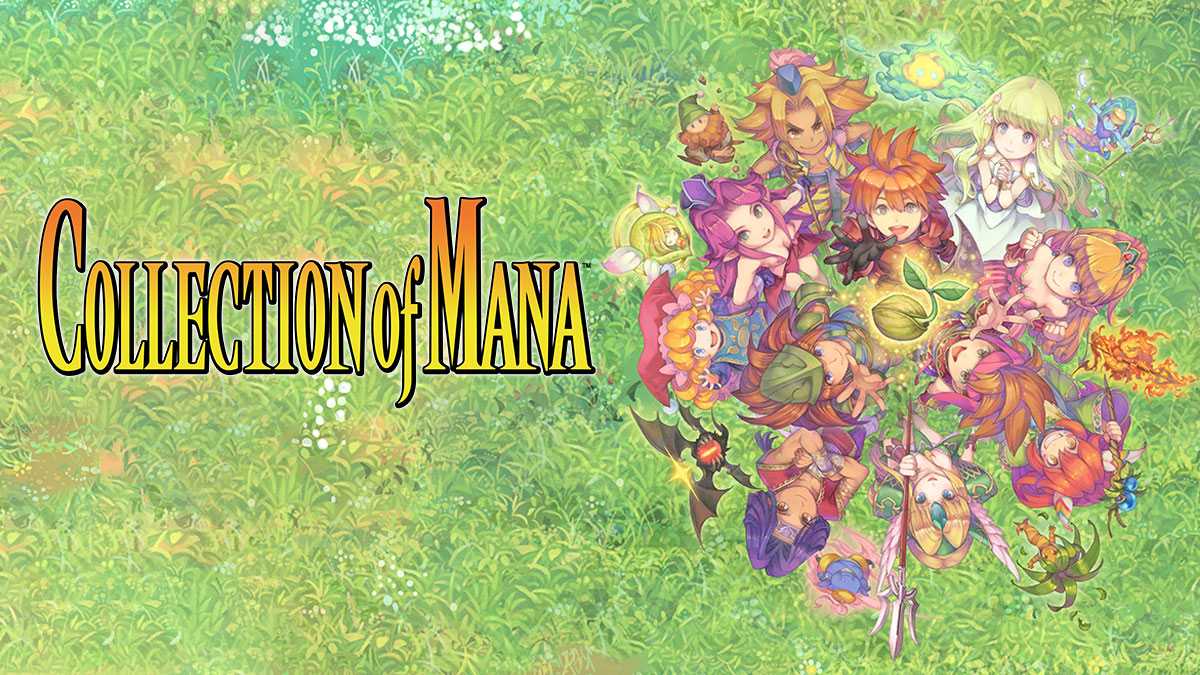
There is an incredible amount of depth, care, and love poured into each of the original Mana / Seiken Densetsu games which truly elevate them to impressive new heights. Despite the limitations of the hardware at the time, especially in the case of Final Fantasy Adventure, they are able to tell a great story with interesting characters. While our review is not entirely focused on the games themselves but rather the collection of games, the time that I have spent with this package has definitely won me over. From the presentation to the general feel of the games, they do still very much stand out. For the price tag of only $40, this is quite a bargain. Read on to find out why!
Collection of Mana
Publisher: Square Enix
Developer: Square Enix
Platform: Nintendo Switch (Reviewed)
Release Date: June 11th
Players: 1-3
Price: $39.99

Collection of Mana is not a remake or even a remaster, it is the touch up that fans should be happy to see. The core of the games remain intact while there are tiny tweaks here and there to ensure that the games are more accessible to a modern audience. The addition of a quick-save/quick-load in particular has been a blessing as I am the worst gamer ever and I die constantly to the most obvious things in the world.
Another small feature that made me smile was that the player can change the view of the game. You can either play with a smaller native resolution or scale it to an HD screen, and if you are playing Final Fantasy Adventure, you can swap between all the different visual styles of the classic Game Boy. It is the little details like that which show that this collection was made with love in mind.
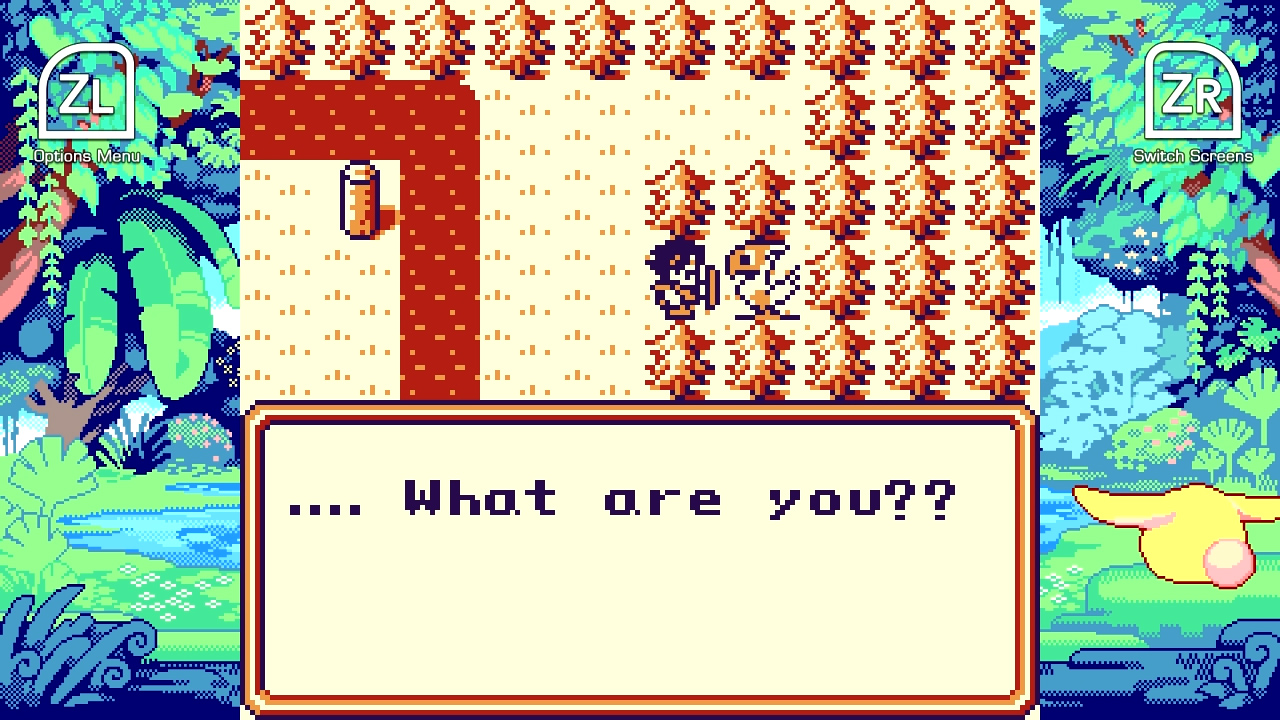
The two things that really stood out to me while playing the collection is the evolution of both the graphics and the gameplay. Over the course of only a few short years, all three games build upon each other in incredible ways. Obviously, it should be expected that sequels should be better than their predecessor, but the amount of improvement between games should be acknowledged and praised.
The games mostly consist of you moving around and exploring the overworld map slashing at enemies, killing them to gain experience and to level up. Again, if you are familiar with Zelda, you should not have any problems picking up and enjoying the Collection of Mana right out of the gate.
As the journey continues, you will unlock new equipment which can allow for a shift in style. Don’t like using your sword against a particular enemy, why not pull out your trusty spear? While each game has a varying amount of depth, they never feel like they overwhelm you with information, something that I find a lot of older generation JRPG’s tend to do.
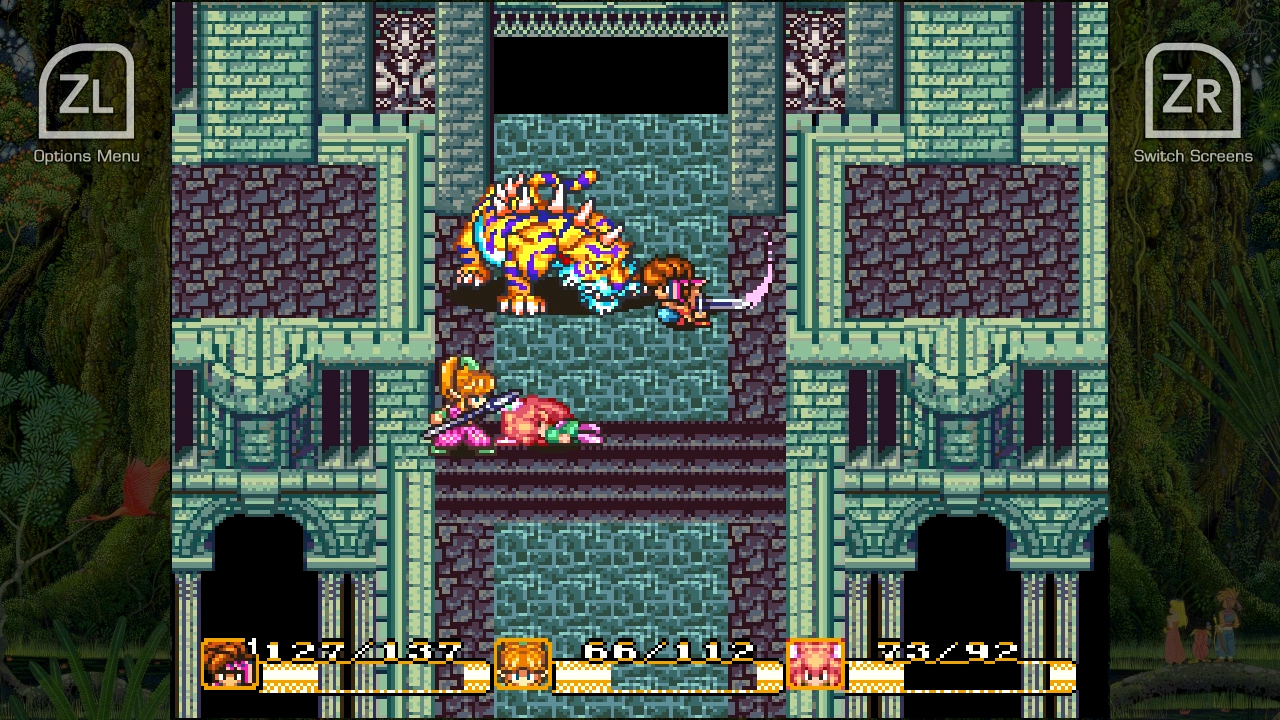
One of the most welcome improvements over time was the combat itself. In order to stop the player from becoming a button mashing baboon, the developers put in a power gauge that, when allowed to charge, allows for stronger attacks. In Final Fantasy Adventure, this bar takes quite a long time to charge up, meaning that the player needs to be very patient when it comes to dealing with enemies.
This was one thing that I genuinely could not stand about Final Fantasy Adventure and if I were reviewing it by itself, I would be hard-pressed to recommend the game to anyone. While I feel it may be redundant to say a game that is nearly 30 years old is dated, the amount of which Final Fantasy Adventure is held back by its age certainly shows.
Luckily, Secret of Mana exists and was able to save the day for me by being an example sequel that improves on its predecessor in every possible way. The combat of Secret of Mana is very much the same as Final Fantasy Adventure except the power meter charges almost immediately, which still stops the player from mindlessly button mashing, but still lets them attack in a more fluid way.
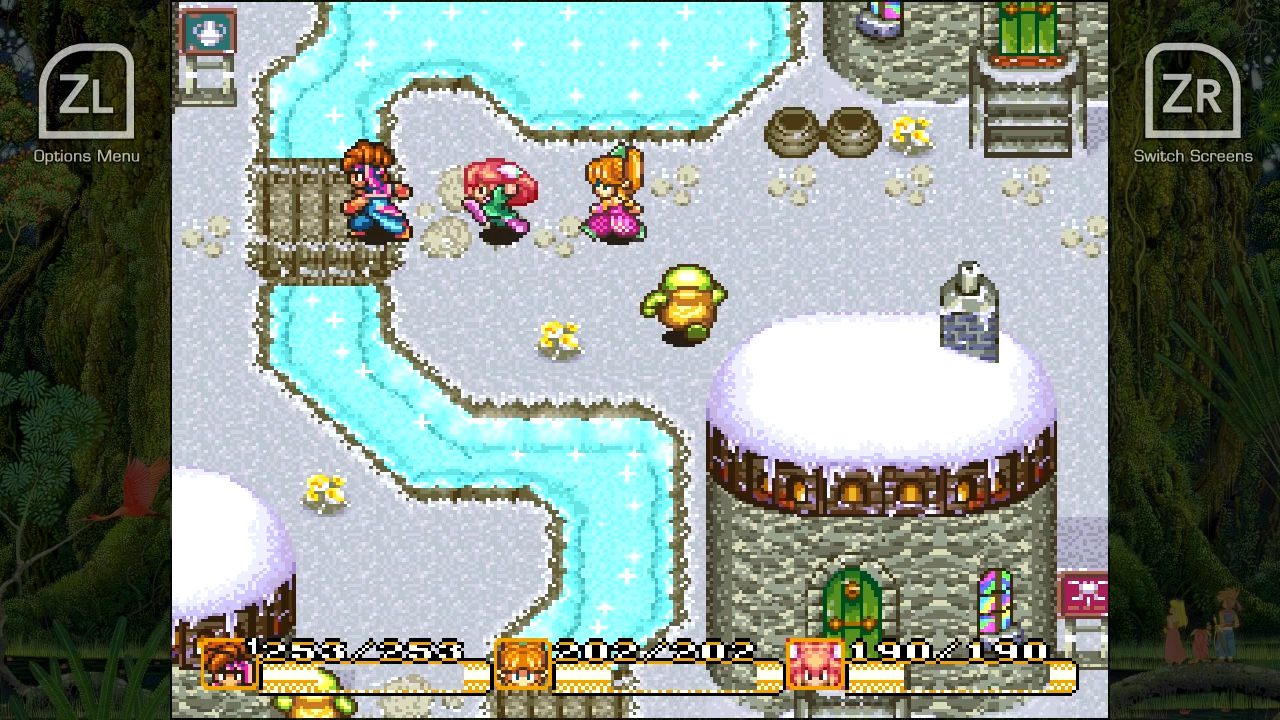
Instead of waiting for what felt like an eternity for my power meter to build up to be able to deal big damage, I was able to build a pleasant rhythm that never left me feeling like I was being held up.
Of course like any JRPG, you will unlock new weapons and equipment as the story progresses and you fall more into your role of being the hero, luckily the transition between outside commoner to hero leaves little to be desired.
The changes continue into Trials of Mana, where the game becomes a bit more open-ended. In the beginning of the game you get to choose 3 of 6 possible characters to make up your party and depending on who you choose, the details of the world and story will be different. This alone allows for quite a lot of replayability in order to see everything that the game has to offer.
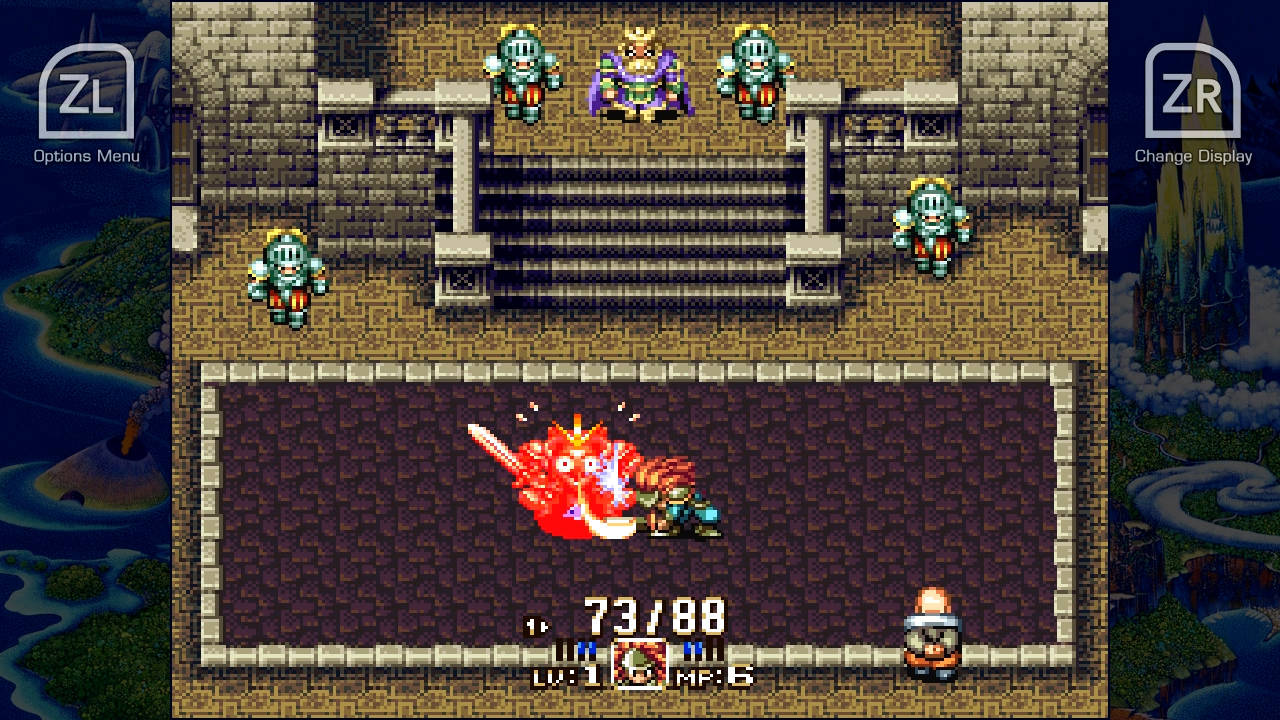
Once again, the combat is different than before. This time the player builds up a meter by landing normal attacks on an enemy before expending that meter to launch a special attack. This is my personal favorite version of the Mana combat in the collection.
The evolved combat allowed me to step back into my button mashing mindset and made battles faster without sacrificing any depth. For fans who have been looking forward to the remake of Trials of Mana set to release next year, this could be the perfect place to start so that they can play the original before playing the remake. I know that I am going to do that.
Unfortunately, I do not think any of these games are perfect, even the flaws that I have with them feel miniscule in comparison the praise I have for them. As I stated before, I think that Final Fantasy Adventure is a bit too dated, but returning fans will probably have no problem picking it up and having a blast. Another issue that I ran into was the menus in Secret of Mana. I struggled and fought with the menu controls every single time that I opened up the in-game menu.
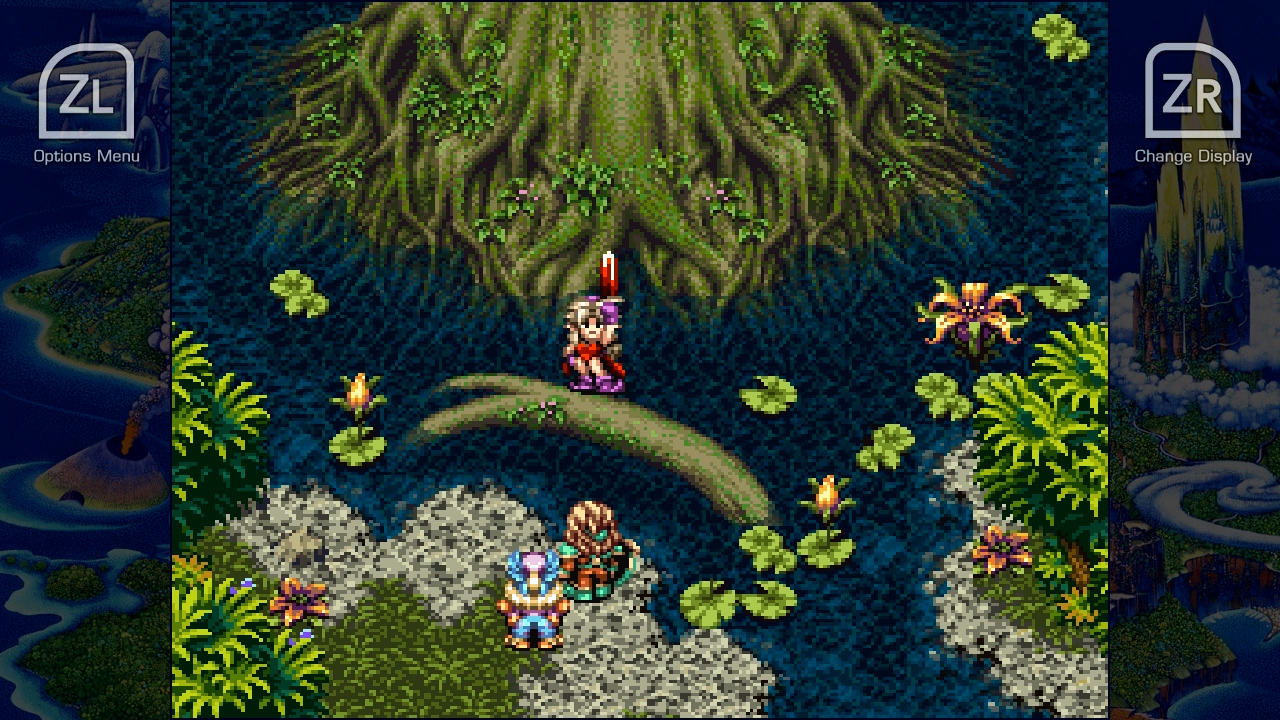
Finally, the only other complaint that I had was that, while I loved the spritework of Trials of Mana, there were some that were a bit too blurry to where I struggled to make out what they were. Even with these few negatives, I can say that there is no bad game in the Collection of Mana, and if picked up, I think any fan of classic JRPG’s will find plenty to enjoy there.
The soundtracks across the games in Collection of Mana are nothing short of incredible. I have always heard that the Mana series had some of the best tracks of any JRPG and after hearing them in-game, I finally get it. Kenji Ito is a legend for the work he has done in the Mana and SaGa series, and one of my biggest regrets is that it took me so long to experience his work.
In fact, Square Enix knew that people love that music so much that they added the ability to listen to the soundtracks on the main menu. When I was doing things around my room, it was convenient to just turn on the music player and turn up the TV while I worked.
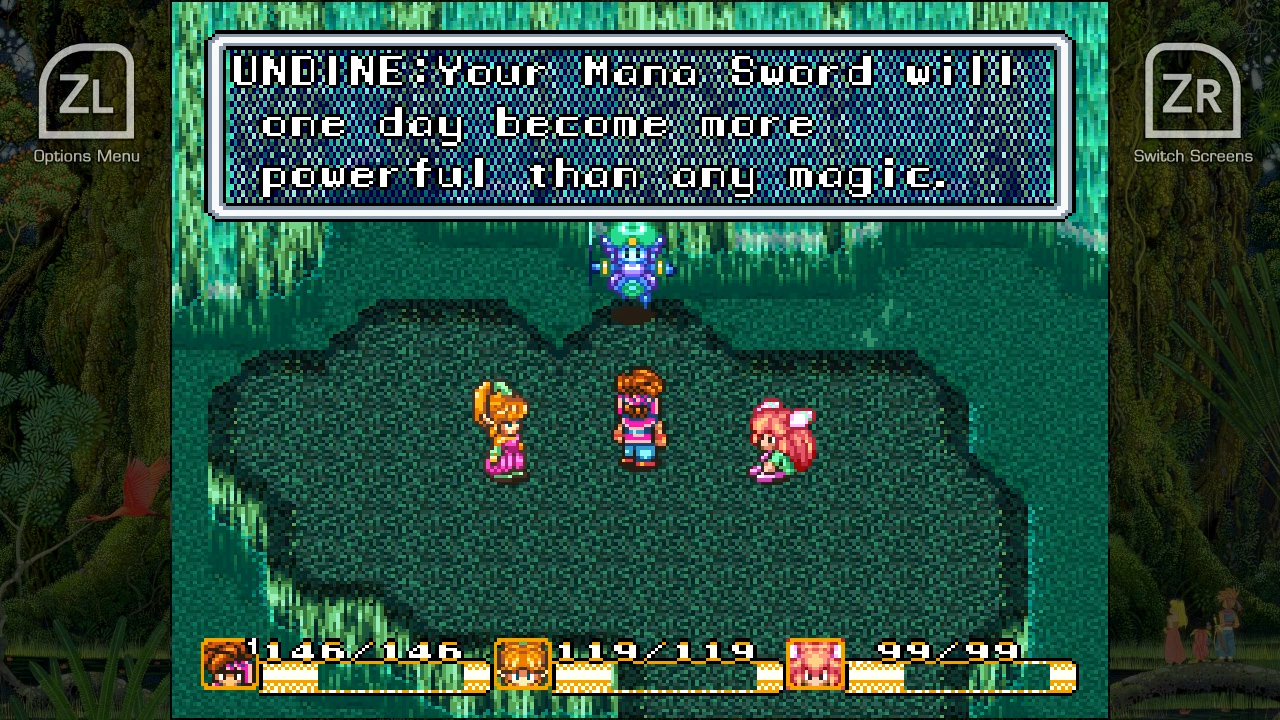
The portability of the Switch is even more of a bonus, that is because the games have such a pleasant atmosphere they are perfect to pick up and play on the go. Across all three games there are easily dozens upon dozens of hours of gameplay for the player to experience and every moment feels like it should be cherished.
The Collection of Mana is awesome and a must buy for any JRPG fan in all honesty. From the addition of quality of life features to the first chance to play Trails of Mana in the west, this is an awesome way to kill some time and fill out your growing Switch catalog.
Collection of Mana was reviewed on Nintendo Switch using a review copy purchased by Niche Gamer. You can find additional information about Niche Gamer’s review/ethics policy here.